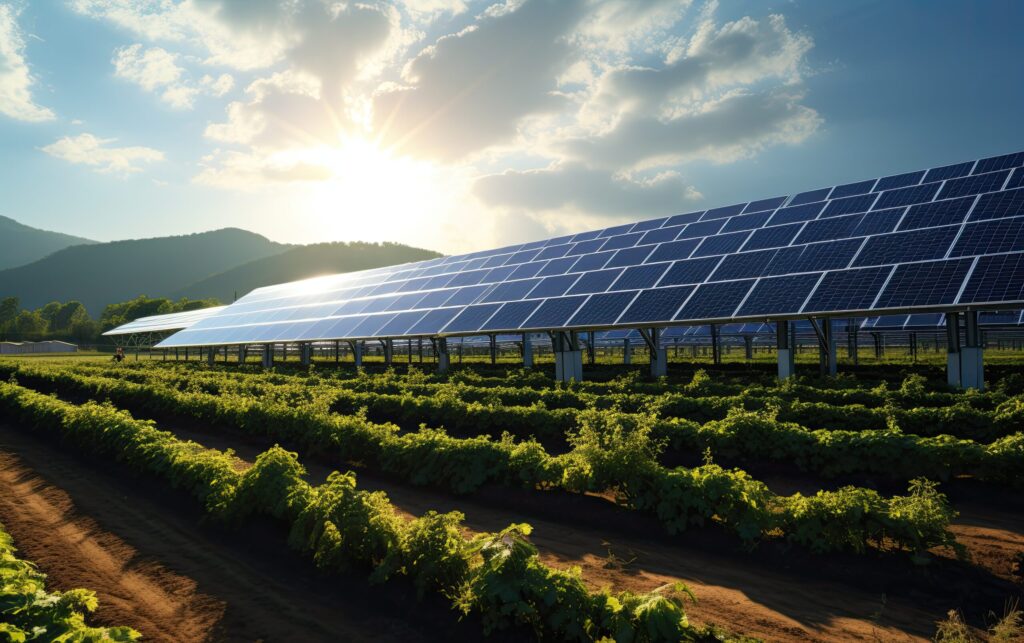As the world transitions to renewable energy, community solar projects are emerging as a transformative solution that not only protects the environment but also promotes social equity. By making solar power accessible to a broader demographic, these projects bridge the gap for underserved communities, reduce carbon footprints, and ensure that the benefits of clean energy are shared equitably.
In this blog, we’ll explore how community solar initiatives drive environmental and social equity, their key benefits, and how they’re reshaping the renewable energy landscape.

1. What Are Community Solar Projects?
Community solar projects, also known as solar gardens or shared solar programs, are large-scale solar installations where multiple participants can share the electricity generated.
How They Work
- Individuals, businesses, or organizations subscribe to a portion of the solar array.
- The energy produced offsets their electricity bills, even if they cannot install solar panels on their property.
This innovative model makes solar power accessible to renters, low-income families, and urban residents who may lack the resources or roof space for traditional solar systems.
2. Promoting Environmental Equity
Community solar projects significantly contribute to environmental equity by reducing pollution in areas most affected by fossil fuel emissions.
Key Environmental Benefits
- Lower Carbon Emissions: Replacing fossil fuel-generated electricity with solar reduces greenhouse gas emissions, slowing climate change.
- Air Quality Improvement: Solar energy eliminates pollutants like sulfur dioxide and nitrogen oxides, which disproportionately affect low-income and minority communities near power plants.
- Land Preservation: Many community solar farms are built on unused or reclaimed land, optimizing resource use without causing habitat destruction.
Communities participating in solar projects benefit from cleaner air and reduced environmental degradation.
3. Advancing Social Equity Through Solar Access
Traditional solar installations often cater to homeowners with financial means, leaving marginalized groups behind. Community solar projects break down these barriers:
Inclusivity
- Renters, who make up 36% of U.S. households, can now access solar energy without needing rooftop panels.
- Low-income families can participate with lower upfront costs or no costs at all through subsidized programs.
Cost Savings
- Subscribers see immediate reductions in their electricity bills, which is particularly impactful for households struggling with energy costs.
- Long-term savings help alleviate energy poverty, where families spend a disproportionate share of their income on utilities.
4. Empowering Local Communities
Community solar projects strengthen local communities by providing opportunities for economic growth and empowerment.
Job Creation
- Projects create jobs in solar panel manufacturing, installation, and maintenance.
- Training programs associated with these projects equip residents with skills for employment in the renewable energy sector.
Local Ownership
- Many projects encourage local ownership, allowing communities to share profits and reinvest in other sustainable initiatives like education or healthcare.
5. Enhancing Resilience in Underserved Areas
Low-income and marginalized communities often face greater vulnerability to climate change and energy disruptions. Community solar projects enhance resilience by:
- Reducing dependence on centralized fossil fuel grids, which are more prone to outages.
- Offering reliable, clean energy that can power essential services during emergencies.
Solar-powered microgrids are especially beneficial in rural and remote areas, ensuring access to electricity in times of crisis.
6. Case Studies: Successful Community Solar Projects
Minnesota, USA
Minnesota leads the U.S. in community solar with over 800 MW of capacity installed. Programs specifically target low-income households, providing significant bill savings and access to clean energy.
India’s Solar Microgrids
In rural India, community solar projects have transformed villages without grid access. These microgrids power homes, schools, and clinics, uplifting entire communities with sustainable energy solutions.
South Africa’s Solar Co-ops
Solar cooperatives in South Africa empower communities to own and manage their solar installations, ensuring profits are reinvested locally.
7. Challenges and Solutions in Scaling Community Solar
While community solar is growing rapidly, challenges remain:
- Regulatory Barriers: Inconsistent policies across regions can hinder project implementation.
- Financing: Upfront costs may still be a barrier for some communities.
- Awareness: Many potential participants are unaware of these programs.
Solutions
- Governments can offer incentives and streamline regulations to encourage community solar adoption.
- Nonprofits and private companies can provide innovative financing options, such as pay-as-you-go models.
- Awareness campaigns can educate communities about the benefits and accessibility of shared solar programs.
8. The Future of Community Solar
As technology advances and costs decline, community solar projects will play an even greater role in the global shift to renewable energy. Emerging trends include:
- Virtual Net Metering: Allows participants to receive credits for their share of solar energy even if they move.
- Energy Storage Integration: Pairing community solar with batteries ensures 24/7 power availability.
- Smart Grids: Advanced grids improve efficiency and reliability for solar energy distribution.
9. Join the Solar Revolution
Community solar projects offer a path toward a fairer and cleaner energy future. By reducing environmental impact, empowering underserved communities, and fostering economic growth, these initiatives embody the essence of sustainability.
At Thangam Energy Solutions Private Limited, we’re proud to support projects that bring the benefits of solar energy to everyone. Whether you’re interested in subscribing to a community solar program or starting your own, we’re here to guide you.
Contact us today to learn how you can participate in building a greener, more equitable tomorrow!
